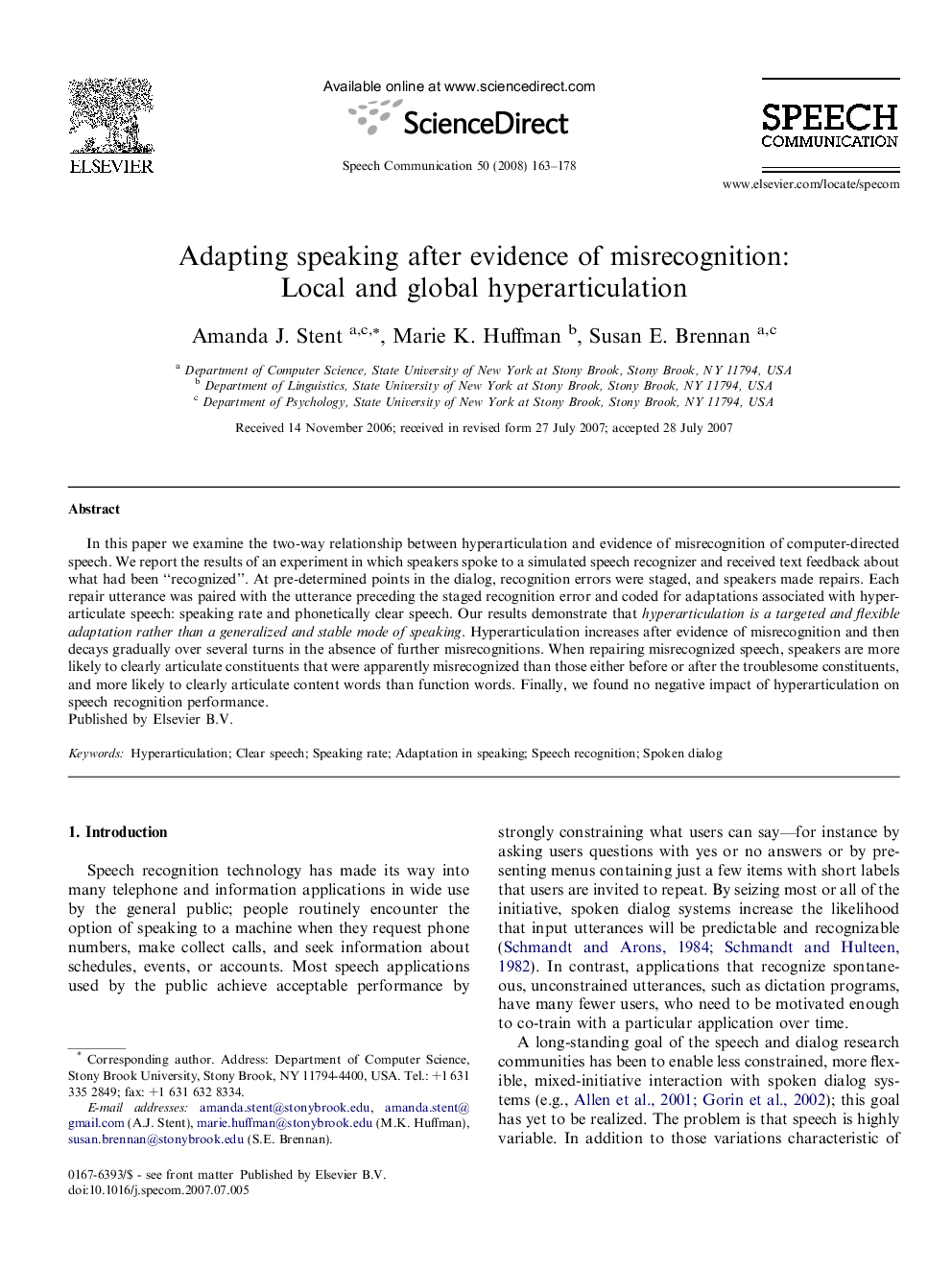| Article ID | Journal | Published Year | Pages | File Type |
|---|---|---|---|---|
| 566342 | Speech Communication | 2008 | 16 Pages |
In this paper we examine the two-way relationship between hyperarticulation and evidence of misrecognition of computer-directed speech. We report the results of an experiment in which speakers spoke to a simulated speech recognizer and received text feedback about what had been “recognized”. At pre-determined points in the dialog, recognition errors were staged, and speakers made repairs. Each repair utterance was paired with the utterance preceding the staged recognition error and coded for adaptations associated with hyperarticulate speech: speaking rate and phonetically clear speech. Our results demonstrate that hyperarticulation is a targeted and flexible adaptation rather than a generalized and stable mode of speaking. Hyperarticulation increases after evidence of misrecognition and then decays gradually over several turns in the absence of further misrecognitions. When repairing misrecognized speech, speakers are more likely to clearly articulate constituents that were apparently misrecognized than those either before or after the troublesome constituents, and more likely to clearly articulate content words than function words. Finally, we found no negative impact of hyperarticulation on speech recognition performance.
